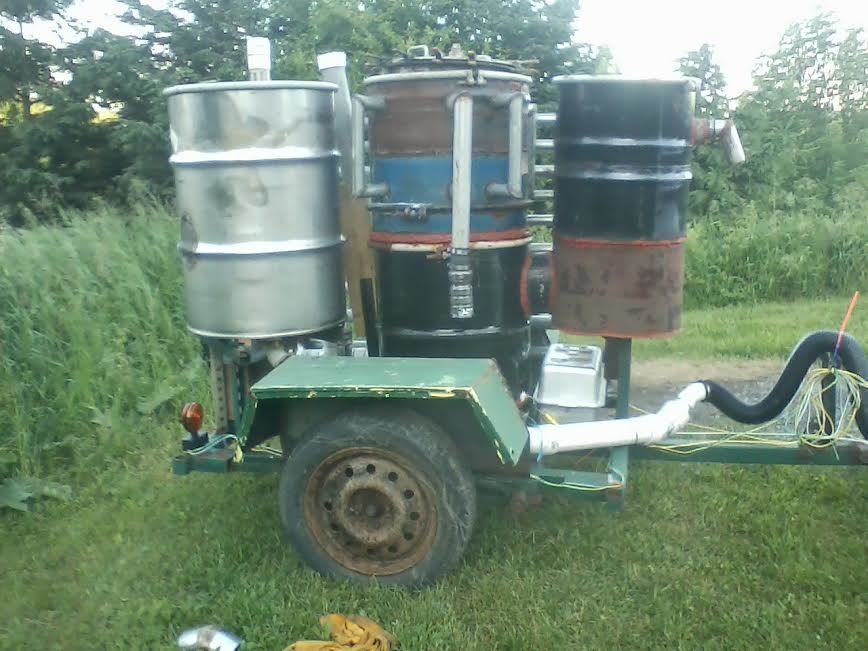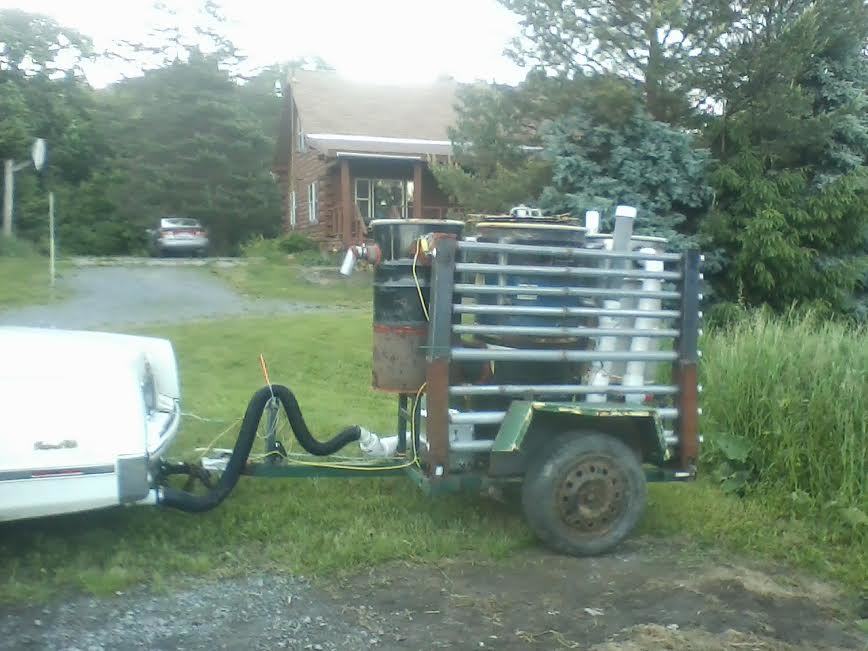Hi all,
I’ve finally got back into gasser mode after a long hiatus. I started this project 2 years ago but basically did nothing with it last year despite being mostly retired. Funny how it seems like I have less time than ever. It does feel great to be tinkering with woodgas again!
Anyways, I started out building a LaRosifier on the back of the Caddy on a platform like Herb did with his Caddy but it became too unwieldy so I decided to go with a trailer ala Mike but with a WK gasifier. I found a great SS barrel to use for the filter and used bits and pieces from the '69 GMC project, may it RIP. I drove the GMC down to our winter place near Asheville where it suffered a few mishaps like jumping out of gear, rolling down a hill and hitting a tree. Finally the trailing arms broke again and, not having my welding equipment with me, I sold it without the gasification system which I had left in NY and later cannibalized for the new Caddy project.
Here are some pictures of the Caddy and trailer:
Under the hood I have two blowers to suck the wood gas up to the engine in addition to the vertical stack of 5 blowers (4 forward 1 reverse) on the trailer. Past the blowers underneath and out of view I have a T going to an air filter and just an open leg to vent gas while the blowers are on. On the trailer I have the heat exchanger towards the car followed by the hopper/firetube section and finally the SS filter section. The trailer is kinda low so I didn’t use a condensate tank but have drain valves on the vertical legs of the radiator and filter. I have a car battery under the exchanger to power the blowers plus a standard ash dump under the firetube/ hopper section. The blower switches are in the back under the filter.
I used a well aged bag of wood chunks to make charcoal and put another bag of chunks in the hopper on top of the charcoal filled firetube.
I fired it up the day before yesterday with mixed results. I was able to flare the gas within minutes of lighting and then tried to move the car. The car didn’t drive well with the lit gasifier on gasoline, probably because I currently have no provision for closing (even partially) the woodgas line to the engine from within the car. All I have is my air valve right now.
After a few minutes of fooling around with the air valve I was able to run the engine on woodgas alone. It would even idle well! However, when I put the car in gear I could not make the hill in the driveway despite the engine running great at very low rpm. Some of this is because I currently have no provision for mechanically advancing the distributor, I read how Herb added this later to his but even before he did he was able to go 65 mph on woodgas. There is another possibility, the car had been running rough for a while on gasoline, the plugs were fine, I figure it has a bad injector but that isn’t easy to change, I had been trying to clean it out with Lucas fuel injector cleaner but so far it hasn’t worked. However, it might have a bad valve instead of injector which of course would hurt the engine’s performance on woodgas as well as gasoline. With the plugs as hard to get to as they are a compression test would not be easy but I might have to do it (sigh).
Also, the “engine overheating” light came on while I was trying to go up the hill so I backed back down and shut it off.
So, some of the things I will try to get the Caddy going down the road include:
- Add provision for mechanically advancing the distributor.
- Add a valve for at least partially closing the woodgas line to the engine from inside the car.
- Add a rheostat to the power to the injectors so I can run in a hybrid gasoline/woodgas mode, currently its either all woodgas or all gasoline. Maybe if I do this I won’t need to do #2. above.
If I still can’t get it to run right I will have to try to rule out a bad valve. I certainly miss the easy access to everything the old GMC had.
If anyone sees something I missed I would appreciate any suggestions.
Thanks,
Rick




 Missed you at Argos ,
Missed you at Argos ,